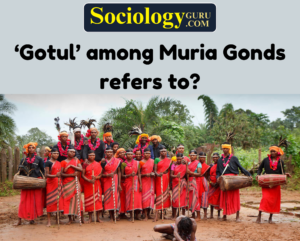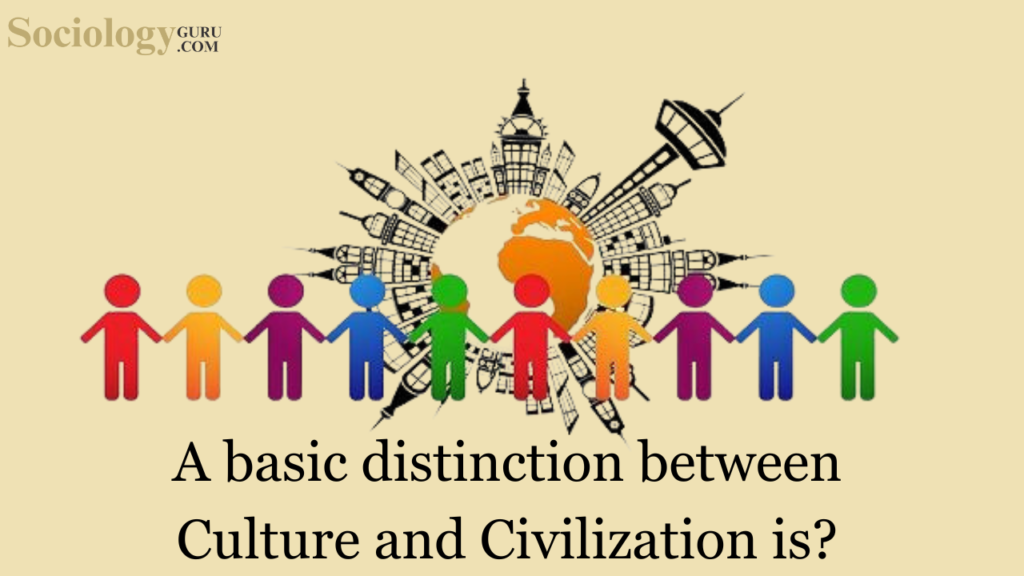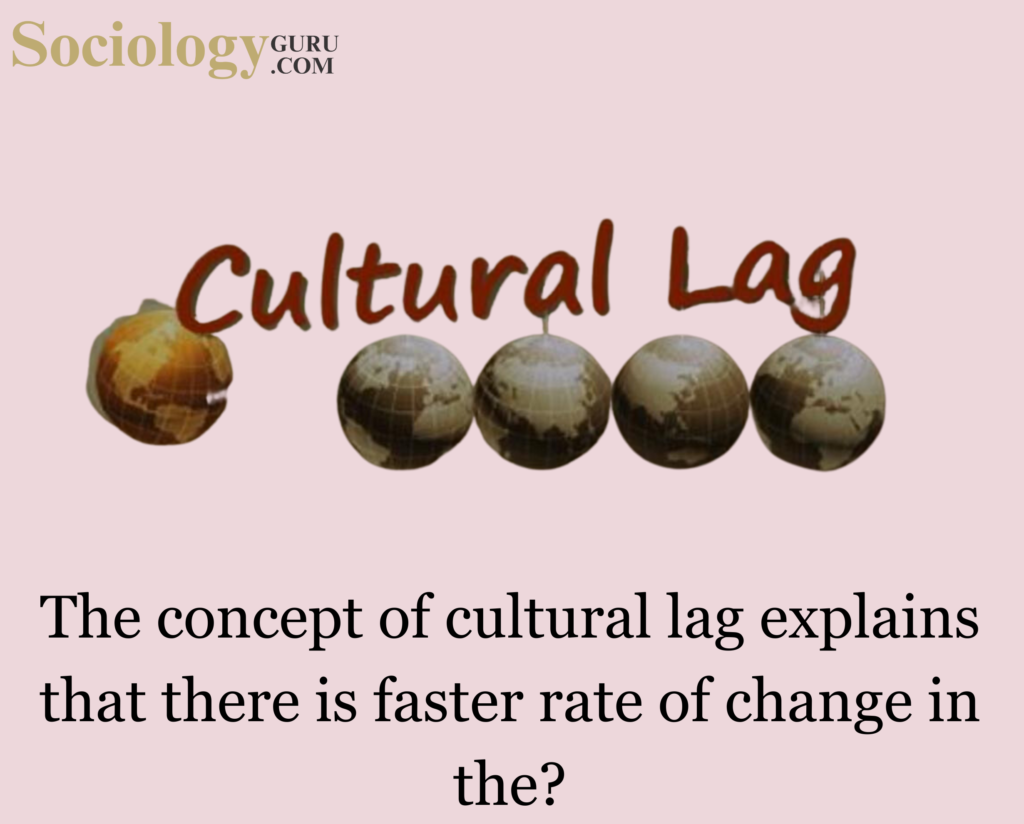Question: Gotul’ among Muria Gonds refers to?
- A religious rite
- Youth dormitory
- Unmarried girl
- Village priest
Answer: (2)The question from the MA CUET (Central University Entrance Test) exam pertains to the cultural practices of the Muria Gond tribe, specifically focusing on the term ‘Gotul.’ The given options include (a) A religious rite, (b) Youth dormitory, (c) Unmarried girl, and (d) Village priest. The correct answer is (b) Youth dormitory. A gotul is a significant cultural institution among the Muria Gonds, a tribal community residing in regions such as Chhattisgarh, Madhya Pradesh, Maharashtra, and Andhra Pradesh in India. To elaborate on the answer, we need to delve into the cultural and social aspects associated with the gotul in the context of Muria Gond society. The term ‘Gotul’ refers to a tribal youth dormitory, typically taking the form of a spacious hut enclosed by earthen or wooden walls. It serves as a communal space for young members of the tribe, and its existence is deeply embedded in the social fabric of the Gond community. Verrier Elwin, a prominent anthropologist, described the gotul as an independent and autonomous “children’s republic,” highlighting its significance as a space exclusively for the youth. The gotul is not just a physical structure but a crucial institution central to both social and religious aspects of Gond society. It plays a pivotal role in shaping the lives of the tribal youths and fostering a sense of community and identity. The question alludes to the diverse nature of cultural practices, and understanding the significance of the gotul provides insights into the Muria Gond way of life. One of the key functions of the gotul is to facilitate the transition of young individuals from adolescence to adulthood. It serves as an educational space where tribal customs, traditions, and societal norms are imparted to the youth. Elders and experienced members of the community often act as mentors within the gotul, passing on essential knowledge and skills to the younger generation. The gotul is not merely a dormitory but a holistic institution that encompasses various activities, including ceremonies, rituals, and discussions on tribal mythology and history. It becomes a space for the transmission of oral traditions, folklore, and the teachings related to the Gond way of life. In this context, the gotul can be seen as a repository of cultural heritage, ensuring the continuity of the tribe’s unique identity. Religiously, the gotul holds a significant place in Gond society. According to Gond legend, Lingo, the supreme deity in their belief system, is credited with creating the first gotul. This mythological connection underscores the sacredness associated with the institution, elevating its status in the eyes of the Muria Gond community. Religious rites and ceremonies are often conducted within the confines of the gotul, further emphasizing its dual role as a religious and social center. The gotul also plays a crucial role in facilitating social interactions and relationships within the tribe. It serves as a space where young men and women come together, fostering friendships and courtships. However, it’s important to note that the gotul is a gender-segregated space, with separate facilities for males and females. The structured environment helps in maintaining societal norms and preserving the cultural values upheld by the Gond community. In summary, the answer to the MA CUET question regarding the term ‘Gotul’ among Muria Gonds being a youth dormitory reflects the cultural and social significance of this institution in the tribal context. The gotul is not merely a physical space but a multifaceted institution that shapes the lives of young individuals, imparts cultural knowledge, and plays a vital role in the religious and social dimensions of Muria Gond society. Understanding the importance of the gotul provides a glimpse into the rich tapestry of tribal traditions and customs, highlighting the diversity of cultural practices in different communities. |
Take a Quick Sociology Quiz to measure your Performance
Frequently Asked Questions:
1. Question: Define the term “ethnic movement” and provide an example from India.
Answer: An ethnic movement refers to a collective effort by a group sharing common cultural, linguistic, or religious traits, seeking to assert their identity and rights; an example from India is the Khalistan Movement in Punjab.
2. Question: Identify the main objectives behind the Gorkhaland ethnic movement.
Answer: The Gorkhaland ethnic movement primarily seeks to establish a separate state for India’s Nepali-speaking population in the Darjeeling region, advocating for linguistic and cultural recognition and political autonomy.
3. Question: What was the Operation Blue Star, and which ethnic movement was it related to?
Answer: Operation Blue Star was a military action in 1984, aiming to remove Sikh militants hiding in the Golden Temple in Amritsar; it is related to the Khalistan movement, which sought a separate Sikh country.
4. Question: Mention a critical factor that triggered the emergence of ethnic movements in India, as discussed by Dipankar Gupta.
Answer: Dipankar Gupta emphasized that ethnicity is fundamentally a political process, wherein caste and religion, the key components of identity formation, are politicized by leaders for vested interests.
5. Question: What were the primary reasons for the Assam Ethnicity conflicts involving Bodo tribals and Bengali Muslim settlers?
Answer: The Assam Ethnicity conflicts primarily stemmed from issues related to immigration, land rights, and resource allocation, leading to clashes, riots, and evolving relationships among indigenous communities to address challenges.
6. Question: Briefly describe the role of the Dravidian Movement in terms of caste and societal structure.
Answer: The Dravidian Movement, led notably by E.V. Ramasamy, aimed to establish an egalitarian society, focusing on anti-Brahmanism and advocating for equal rights for backward castes, while also introducing reforms like self-respect marriages.
7. Question: Name the prominent ethnic movements in North-East India and specify one common objective.
Answer: Prominent ethnic movements in North-East India include the Nagas’ and Mizos’ struggles; a common objective was to gain autonomy and recognition for their distinct tribal identities and cultural uniqueness.
8. Question: What is the key argument of Gail Omveldt regarding traditional Indian society and multiculturalism?
Answer: Gail Omveldt opposed romanticizing traditional Indian society, arguing that hierarchy has always dominated it and dismissing the notion that multiculturalism is an intrinsic feature of Indian society as a myth.
9. Question: Briefly explain the social hierarchy factor as a contributing element to ethnic movements as suggested by Olzak.
Answer: Olzak suggests that the construction of hierarchies among ethnic communities, which often leads to the suppression of one group by another, is a key factor that can instigate social and ethnic movements.
10. Question: Identify one consequence of the unequal economic development factor within the context of ethnic movements in India.
Answer: One consequence of unequal economic development is the marginalization and underdevelopment of certain groups, leading to feelings of alienation and sometimes initiating ethnic movements as these groups strive for equality and recognition.
To master these intricacies and fare well in the Sociology Syllabus, aspiring sociologists might benefit from guidance by the Best Sociology Teacher and participation in the Best Sociology Coaching. These avenues provide comprehensive assistance, ensuring a solid understanding of sociology’s diverse methodologies and techniques.
META TAGS:
Why Vikash Ranjan’s Classes for Sociology?
Proper guidance and assistance are required to learn the skill of interlinking current happenings with the conventional topics. VIKASH RANJAN SIR at SOCIOLOGY GURU guides students according to the Recent Trends, making him the Best Sociology Teacher for Sociology.
At Sociology Guru, the Best Sociology Coaching platform, we not only provide the best study material and applied classes for Sociology but also conduct regular assignments and class tests to assess candidates’ writing skills and understanding of the subject.
Choose The Best Sociology Teacher for your Preparation?
To master these intricacies and fare well in the Sociology Syllabus, aspiring sociologists might benefit from guidance by the Best Sociology Teacher and participation in the Best Sociology Coaching. These avenues provide comprehensive assistance, ensuring a solid understanding of sociology’s diverse methodologies and techniques. Sociology, Social theory, Best Sociology Teacher, Best Sociology Coaching, Sociology Syllabus.
Best Sociology Teacher, Sociology Syllabus, Sociology, Sociology Coaching, Best Sociology Coaching, Best Sociology Teacher, Sociology Course, Sociology Teacher, Sociology Foundation, Sociology Foundation Course, Sociology CUET, Sociology for IAS, Sociology for UPSC, Sociology for BPSC, Sociology for UGC NET, Sociology for JPSC,
Follow us :
KEYWORD:-Gotul, Gotul, Gotul, Gotul, Gotul, Gotul, Gotul, Gotul, Gotul, MA CUET SOCIOLOGY



